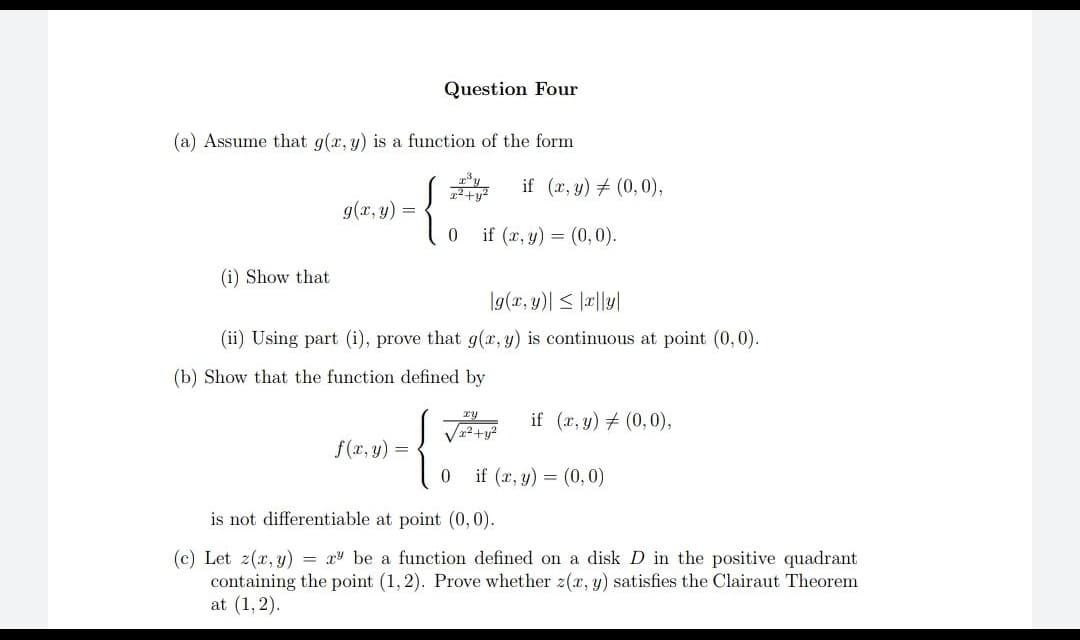(a) Assume that g(x, y) is a function of the form g(x, y) = 0 if (x, y) = (0,0). (i) Show that g(x, y)| ≤ |x|ly| (ii) Using part (i), prove that g(x, y) is continuous at point (0,0). if (x, y) = (0,0),
(a) Assume that g(x, y) is a function of the form g(x, y) = 0 if (x, y) = (0,0). (i) Show that g(x, y)| ≤ |x|ly| (ii) Using part (i), prove that g(x, y) is continuous at point (0,0). if (x, y) = (0,0),
Algebra & Trigonometry with Analytic Geometry
13th Edition
ISBN:9781133382119
Author:Swokowski
Publisher:Swokowski
Chapter5: Inverse, Exponential, And Logarithmic Functions
Section5.3: The Natural Exponential Function
Problem 52E
Related questions
Question

Transcribed Image Text:Question Four
(a) Assume that g(x, y) is a function of the form
g(x, y) =
{
0
if (x, y) = (0,0).
(i) Show that
g(x, y)| ≤ |x|ly|
(ii) Using part (i), prove that g(x, y) is continuous at point (0,0).
(b) Show that the function defined by
√²+²
if (x, y) = (0,0),
f(x, y) =
0 if (x, y) = (0,0)
is not differentiable at point (0,0).
(c) Let z(x, y) = x be a function defined on a disk D in the positive quadrant
containing the point (1,2). Prove whether z(x, y) satisfies the Clairaut Theorem
at (1, 2).
if (x, y) (0,0),
Expert Solution
This question has been solved!
Explore an expertly crafted, step-by-step solution for a thorough understanding of key concepts.
Step by step
Solved in 4 steps

Recommended textbooks for you

Algebra & Trigonometry with Analytic Geometry
Algebra
ISBN:
9781133382119
Author:
Swokowski
Publisher:
Cengage

Linear Algebra: A Modern Introduction
Algebra
ISBN:
9781285463247
Author:
David Poole
Publisher:
Cengage Learning


Algebra & Trigonometry with Analytic Geometry
Algebra
ISBN:
9781133382119
Author:
Swokowski
Publisher:
Cengage

Linear Algebra: A Modern Introduction
Algebra
ISBN:
9781285463247
Author:
David Poole
Publisher:
Cengage Learning
